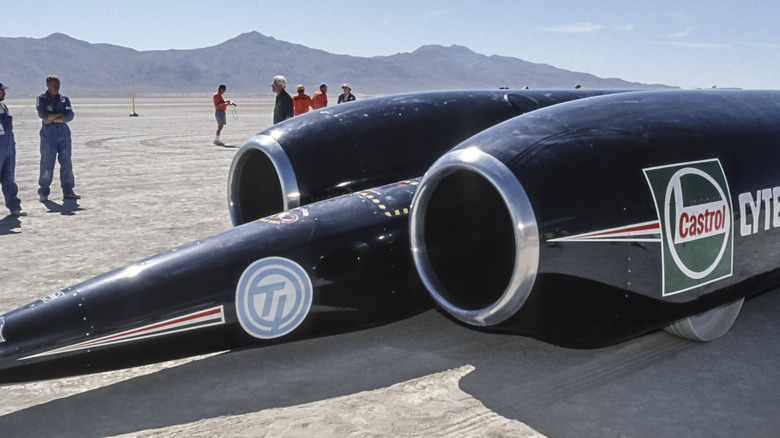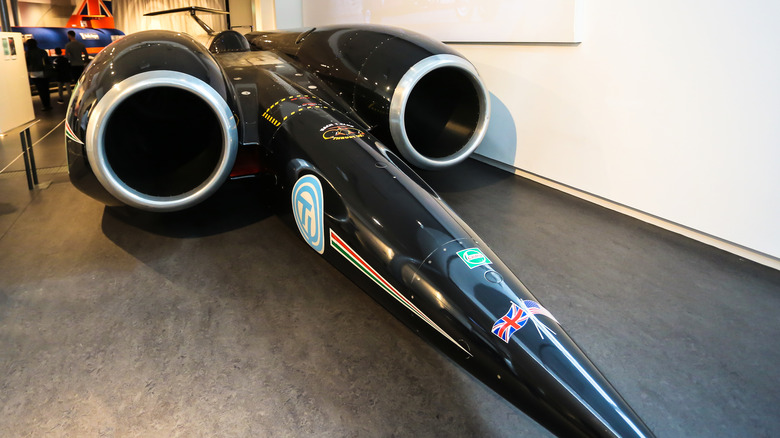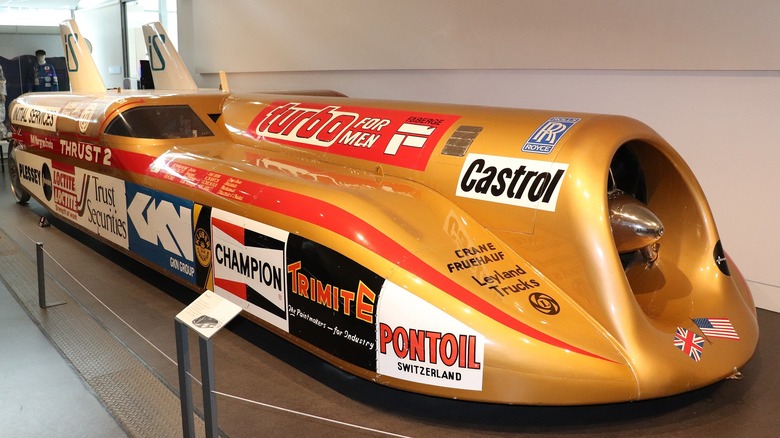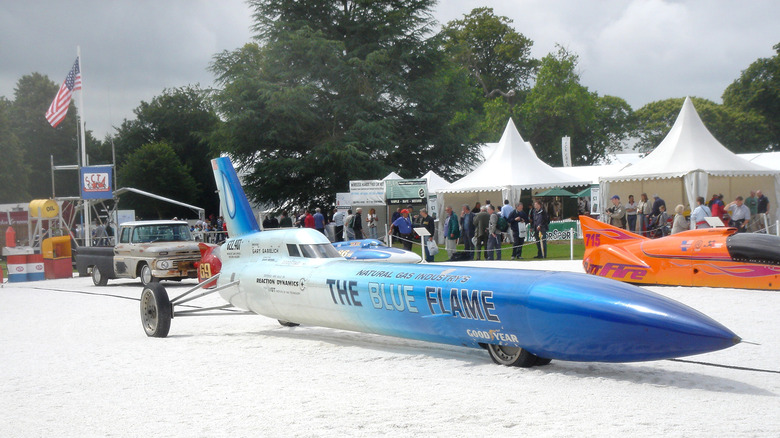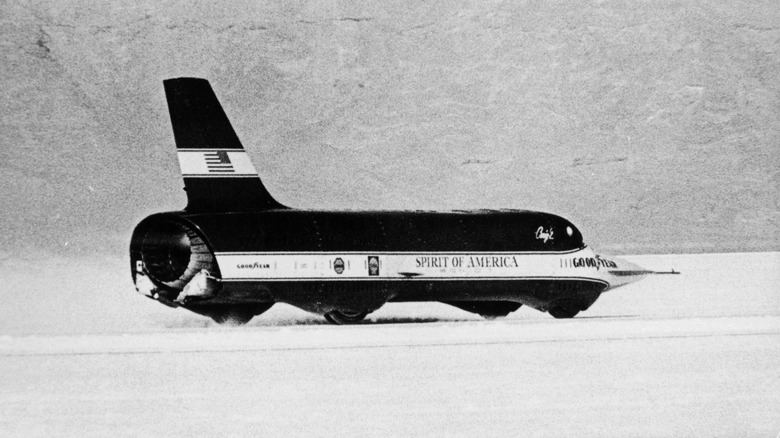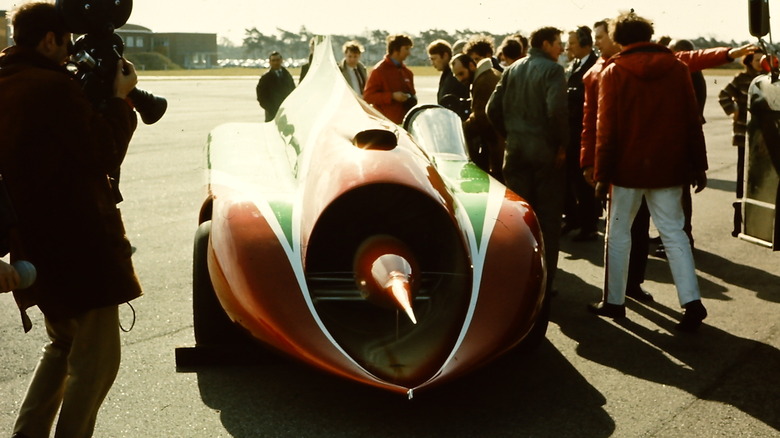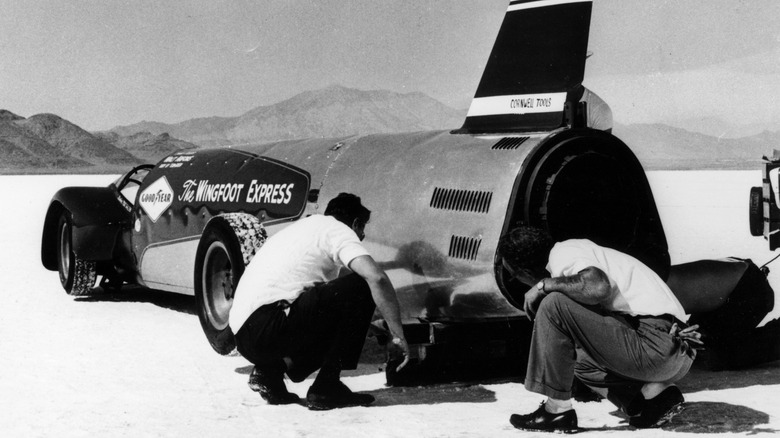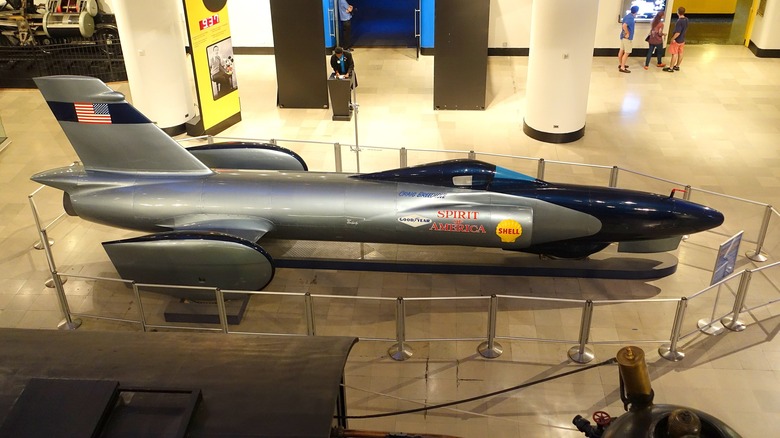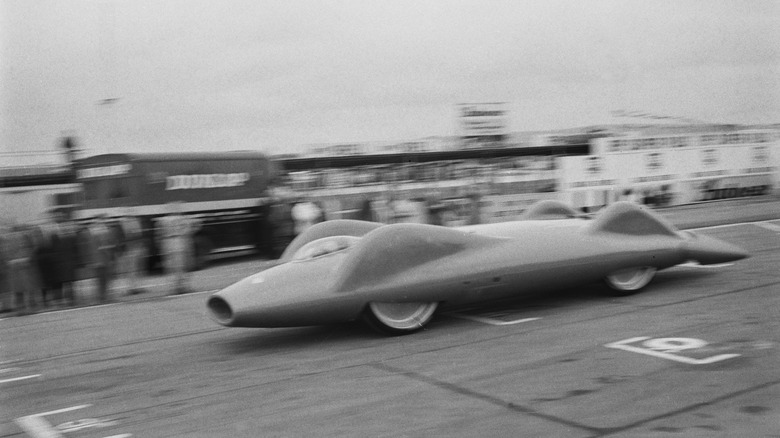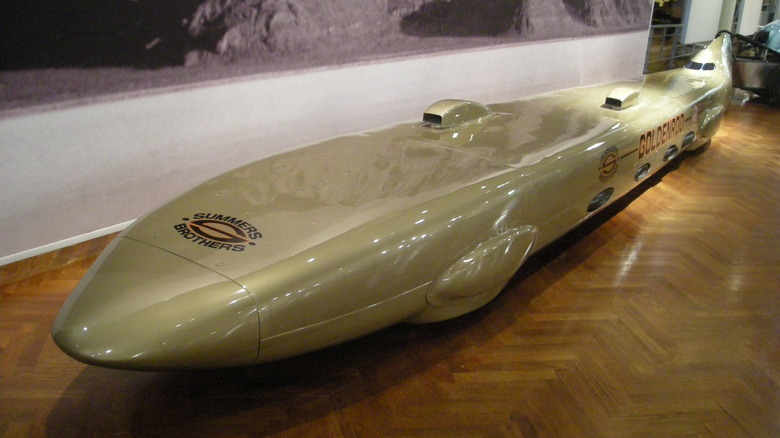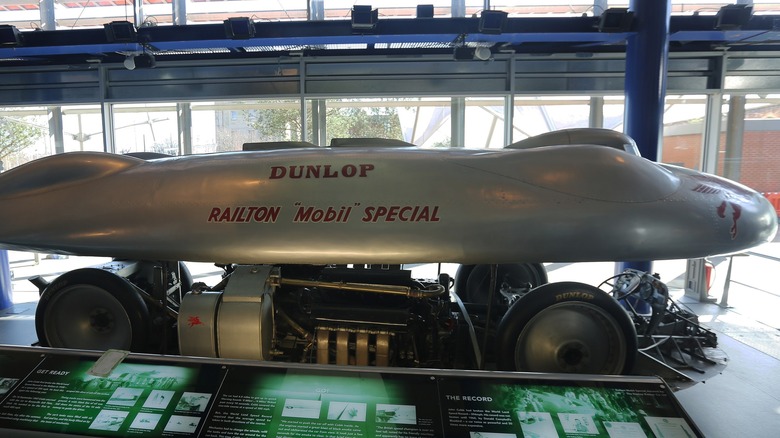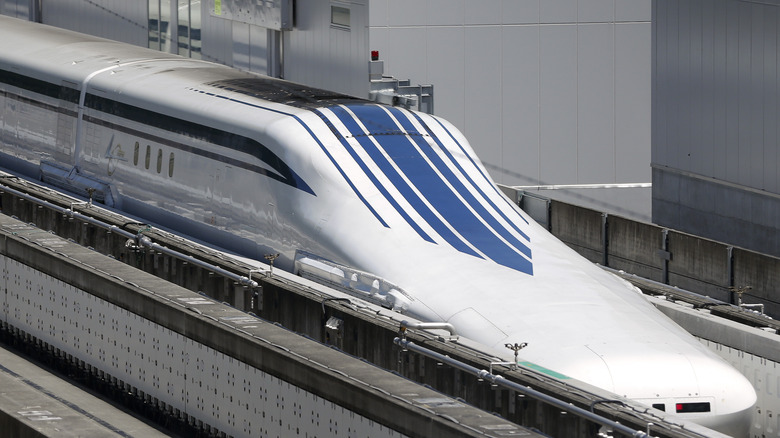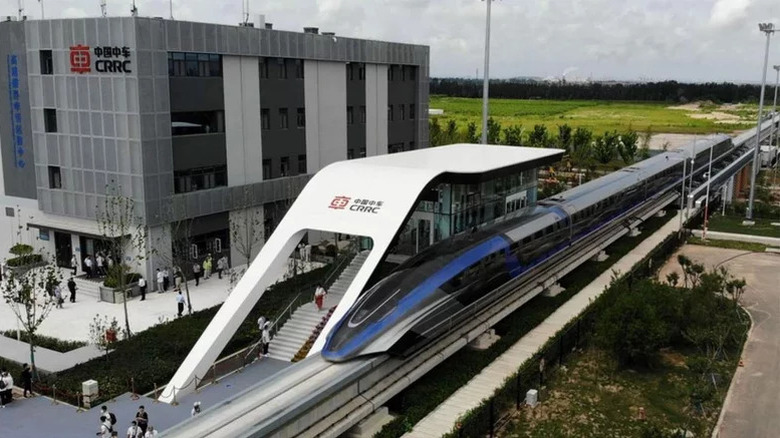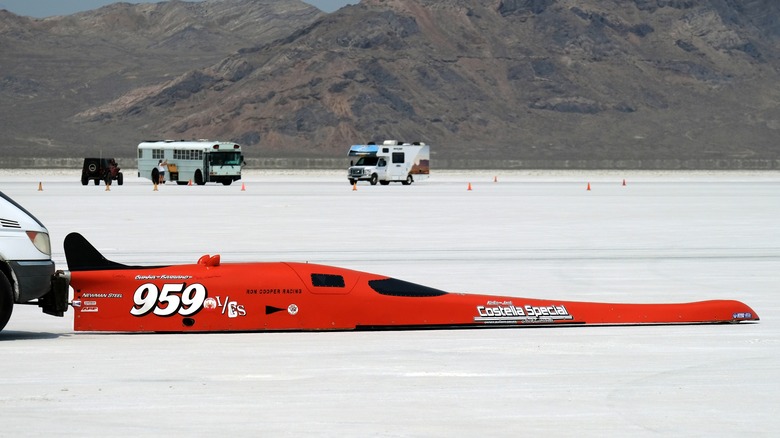The 12 Fastest Ways To Travel On Land
Ground-based transportation has come a long way since the invention of the wheel. From horse-drawn carriages to trains and cars, the need for speed and efficiency has driven technological advancements in the industry. Today, we have a wide range of vehicles that can travel at incredible speeds, from traditional trains and cars to more futuristic concepts like the Hyperloop.
One of the key technologies that have enabled faster ground-based transportation is the internal combustion engine. These engines, which are found in cars and trains, use a mixture of fuel and air to create a controlled explosion, which generates power and propels the vehicle forward. Jets, which are used in planes, also rely on internal combustion engines, but they use a different type of fuel and a different type of combustion process.
Another technology that has enabled faster ground-based transportation is the use of magnets. Maglev trains, which are short for magnetic levitation trains, use powerful magnets to lift the train off the tracks and propel it forward. This eliminates the friction and resistance that traditional trains encounter, allowing for much faster speeds. The Hyperloop concept, which is still in development, also relies on the use of magnets to levitate pods and propel them through a vacuum-sealed tube at high speeds.
As we look to the future of ground-based transportation, we can expect to see even more advancements in technology. Electric and hybrid vehicles are becoming more popular, and they offer a more sustainable option than traditional gasoline-powered vehicles. Advancements in materials science and aerodynamics will also play a role in making vehicles faster and more efficient. But for now, let's take a look at the 12 fastest ground-based vehicles to have ever been built and explore their technology and history.
Thrust SSC - 763 mph (1,228 km/h)
Thrust SSC, or the Super Sonic Car, was a British jet-propelled car that made history on October 15, 1997, by officially breaking the sound barrier and setting the world land speed record. Driven by British Royal Air Force (RAF) Wing Commander Andy Green, the car reached a top speed of 763.035 mph (1,227.986 km/h) during its record-breaking run. This marked a significant milestone not only in the history of land speed record attempts but also in the fields of transportation and engineering (via Coventry Transport Museum).
The car was designed and built by a team of engineers and aerodynamicists led by Richard Noble, who had previously set the land speed record in 1983 with Thrust II. The team's goal was to push the boundaries of what was possible with current technology and to inspire future generations of engineers and innovators.
The design of the Thrust SSC incorporated cutting-edge technology, including twin afterburning Rolls-Royce MK 202 Spey Turbofan jet engines, a steel space frame, and a carbon fiber composite body (via The New York Times), along with a unique four-wheel drive system (via Mega Projects). The two Rolls-Royce Spey jet engines, which were originally used in the British Phantom fighter jet, provided a combined thrust of over 196kN (44,000 lbs), propelling the car to its record-breaking speed. The car was also equipped with advanced aerodynamic features, such as a delta wing, that helped it reach supersonic speeds and maintain stability at high speeds.
The successful run of the Thrust SSC was a true testament to the capabilities of human innovation and engineering. It pushed the limits of what was thought possible with ground-based transportation and set a new benchmark for future land speed record attempts.
The car's design and technology were later applied in other areas, such as aerospace and Formula 1 racing, and the team behind the project went on to inspire future generations of engineers and scientists. The car continues to be celebrated as a symbol of human achievement and a reminder of the potential for progress and advancement in the field of transportation.
Thrust II - 633 mph (1,019 km/h)
Thrust II, driven by British driver Richard Noble, was the predecessor to the Thrust SSC and set the land speed record in 1983, reaching a confirmed top speed of 633.468 mph (1,019.47 km/h). It was powered by a Rolls-Royce RB.146 (Avon302C) jet turbine engine that generated 72 kN of thrust. The supercar was able to achieve such high speeds due to its lightweight design and aerodynamic shape.
The design of the Thrust II was an evolution of the original Thrust I, with a longer and more slender body to reduce drag.
During its record-breaking run, Noble reached an average top speed of 633.468 mph (1,019.47 km/h) in just one mile during the vehicle's two runs, making it the fastest ground-based vehicle at that time. The record stood for over a decade until it was broken by another British driver, Andy Green, in the Thrust SSC.
It took 59 seconds for Thrust II to reach a top speed of 650 miles per hour (1,046.07 km/h) through a progression of increasing speeds: 200 miles per hour (321.87 km/h) in 9 seconds, 400 miles per hour (643.74 km/h) in 20 seconds, and 600 miles per hour (965.61 km/h) in 40 seconds (via Land Speed Record).
In conclusion, Thrust II was an engineering marvel that pushed the boundaries of what was possible in terms of speed and technology. It was a true testament to the capabilities of jet propulsion and aerodynamics. The success of Thrust II laid the foundation for the development of the Thrust SSC, which would go on to break the sound barrier and set an even faster land speed record. Despite being outpaced by its successor, Thrust II remains a significant achievement in the history of land speed record attempts and transportation engineering.
[Featured image by Vauxford via Wikimedia Commons | Cropped and scaled | CC BY-SA 4.0]
Blue Flame - 622.407 mph (1,001.667 km/h)
The Blue Flame was a rocket-powered car that made history in 1970 when it set the land speed record. Driven by Gary Gabelich, the car reached a top speed of 622.407 mph (1,001.667 km/h) in the flying mile and 630.389 mph (1,014.52 km/h) in the flying kilometer on October 23, 1970 (via Land Speed Racing History).
The car was designed and built by a team from Reaction Dynamics, led by Pete Farnsworth, Ray Dausman, and Dick Keller, who were an experienced trio of engineers in the field of rocket propulsion (via Unique Cars and Parts). The Blue Flame was powered by a combination of liquid natural gas and high-test peroxide, which provided the necessary thrust to reach such high speeds. This was a significant achievement in the history of land speed records, as it showed the potential of rocket propulsion technology for ground-based transportation.
The Blue Flame's record-breaking run took place at the Bonneville Salt Flats in Utah, USA. The car's sleek and aerodynamic design, combined with the power of the rocket engine, allowed it to reach such high speeds. The engine produced over 22,000 lbs of thrust (via SEMA).
The Blue Flame's record stood for almost a decade until it was broken by the Thrust II in 1983. However, the Blue Flame's achievement is still significant and it remains an important milestone in the history of land speed record attempts as it was the first time a rocket-powered car had broken the land speed record. The car's innovative design and use of rocket propulsion technology inspired a new generation of land speed record contenders and continues to be an inspiration for engineers and designers today (via Institution of Mechanical Engineers).
[Featured image by Troxx via Wikimedia Commons | Cropped and scaled | Public domain]
Spirit of America Sonic - 600.601 mph (966.574 km/h)
The Spirit of America Sonic was a jet-powered car that set the land speed record in 1965, reaching speeds of over 600 miles per hour (966.574 km/h). It was driven by American driver Craig Breedlove, who made several attempts to break the land speed record with various vehicles throughout the 1960s.
The Spirit of America Sonic was powered by a GE J79 jet engine, which is the same engine that was used in the F-4 Phantom II fighter jet. The car was built with a unique design, featuring a long, slender body and a sleek aerodynamic shape that allowed it to cut through the air with minimal drag. It also featured a large stabilizing fin at the back, which helped to keep the car stable at high speeds.
The Spirit of America Sonic's record-breaking run took place on the Bonneville Salt Flats in Utah, where Breedlove reached a top speed of 600.601 mph (967.222 km/h). This was the first time that a land vehicle had officially broken the 600 mph barrier, and it marked a significant achievement in the history of land speed record attempts.
The car's success was due in part to the powerful GE J79 jet engine, which was capable of producing over 17,000 pounds of thrust (via National Museum of the United States Air Force). This allowed the Spirit of America Sonic to accelerate rapidly and reach incredibly high speeds. However, it was also due to the careful design and engineering of the car, which was optimized for maximum speed and stability.
After taking a break from setting world records, Breedlove began working on a new Spirit in 1992, which was eventually named the Spirit of America Formula Shell LSRV. The vehicle was 44 feet 10 inches long, 8 feet 4 inches wide, and 5 feet 10 inches high. The construction was based on a steel tube frame with an aluminum skin body. The engine used a modified GE J79, capable of burning unleaded gasoline and generating a maximum thrust of 22,650 pounds of force (via Scarf and Goggles).
Unfortunately, the first run of the vehicle on October 28, 1996, in the Black Rock Desert, Nevada, ended in a crash at around 675 mph (1,086 km/h) (via OCLC WorldCat Identities). Despite this setback, Breedlove and his team continued to work on the vehicle, determined to break the land speed record and make history.
The Green Monster - 576.5 mph (927 km/h)
The Green Monster was a jet-powered car built by American race car driver and inventor Art Arfons in the mid-1960s. It was a product of Arfons' experimentation and passion for speed, and it set multiple land speed records during its time.
The J-79 Green Monster was powered by a General Electric J79 jet engine, which was commonly used in military fighter jets such as the McDonnell Douglas F-4 Phantom II. The car was able to reach speeds of over 576 mph (926 km/h), setting multiple land speed records during its time.
The Green Monster was built in Akron, Ohio, and was first tested in 1964. The Green Monster made its debut in 1964 and immediately set a new land speed record of 434.022 mph (698.490 km/h). Arfons continued to make modifications to the car, and in 1965, he set another record of 536 mph (862 km/h). The following year, he pushed the limits even further and set a new record of 576.553 mph (927 km/h) (via Land Speed Racing History). This was the fastest land speed record at that time.
The Green Monster was a formidable machine, with a sleek and aerodynamic design. The body of the car was made of fiberglass, which helped to reduce its weight and increase its speed. The J-79 engine was mounted behind the driver's seat, and the car was equipped with several advanced features (via John Doe).
Despite its successes, the Green Monster met with a tragic end. During a test run in November of 1966, the car experienced a mechanical failure that caused it to crash. Art Arfons was not injured in the crash, but the Green Monster was destroyed (via Vault.si). Despite the loss of the car, the legacy of the Green Monster lives on.
[Featured image by Bri Ham via Wikimedia Commons | Cropped and scaled | Public domain]
The Wingfoot Express - 413 mph (665 km/h)
The Wingfoot Express was a land-speed racing car built by Walt Arfons and driven by Tom Green in the highly competitive 1960s. The car was known for its unique triangular shape and its large wing, but its name did not derive from this shape. It was named after the symbol of the Goodyear Tire and Rubber Company, the car's sponsor (via The New York Times).
The car was powered by a jet engine and reached speeds of over 413 mph (512 km/h) (via Land Speed Record). This made it one of the fastest land vehicles of its time and a formidable competitor in the world of land-speed racing.
The Wingfoot Express was built with a unique aerodynamic design that allowed it to reach such high speeds. The triangular shape of the car, combined with its large wing, helped to reduce drag and increase stability at high speeds. The jet engine that powered the car was also a major factor in its performance. The jet engine, which was located at the back of the car, was a Westinghouse J-46 with afterburner and was capable of producing over 31kN (7,000 pounds) of thrust (via Greg Wapling).
The Wingfoot Express made its debut at the Bonneville Salt Flats in Utah in 1964, where it set a new land speed record of 413.20 miles per hour (664.98 km/h). This record was short-lived, as it was broken by the Green Monster just a few days later.
Following its success, Arfons returned with the Wingfoot Express II in 1965. The newer model was powered by 25 JATO (jet-assisted take-off) rockets but it failed to complete its measured mile. After the unsuccessful run, Walt Arfons and the Wingfoot Express II did not come back to the salt flats. It is rumored that Arfons dismantled the rocket car. Nevertheless, the Wingfoot Express will always be remembered as a pioneering vehicle in the field of land-speed racing and an important part of the history of transportation and engineering.
Spirit of America - 526.3 mph (846.96 km/h)
The Spirit of America was a land-speed racing car built and driven by Craig Breedlove in the 1960s. It was powered by a General Electric J47 jet engine, which provided a maximum thrust of 9,000 pounds.
In 1964, Craig Breedlove set the land speed record with the Spirit of America by reaching an average speed of 526.277 mph (846.96 km/h), becoming the first person to exceed 500 mph on land (via Digital Library Illinois). This was a significant achievement in the history of land-speed racing and transportation, as it marked a new era of high-speed technology and engineering.
However, Breedlove's record was quickly broken by Art Arfons and his jet-powered car, the Green Monster. This sparked fierce competition between Breedlove and Arfons, known as the "Jet Wars," as each driver attempted to break the other's record.
Despite the success of the Spirit of America, Breedlove decided to move on to a new project, the Spirit of America Sonic 1, which would eventually break the land speed record again. However, the Spirit of America will always be remembered as a significant milestone in land-speed racing and transportation history.
[Featured image by Daderot via Wikimedia Commons | Cropped and scaled | CC0 1.0]
BlueBird CN7 - 413.10 mph (648.7 kmph)
The BlueBird CN7 was a land-speed racing car built by Donald Campbell, a British speed record breaker, in the 1950s and 1960s. The car was built as a successor to Campbell's previous hydroplane, the Bluebird K7, which had set multiple water speed records (via Gina Campbell). The CN7 was designed to break the land speed record on four wheels.
Construction of the CN7 began in 1956 and was completed in 1960. The Norris brothers designed the Bluebird-Proteus CN7 with the intention of reaching speeds of 500 mph (800 km/h). The vehicle was completed by the spring of 1960 and powered by a 4,450 shp (3,320 kW) Bristol-Siddeley Proteus free-turbine engine. It had a unique aerodynamic design, with a pointed nose and a smooth, streamlined body.
The public launch of the vehicle took place at Goodwood in July of that year, and two months later, Campbell and the CN7 reached speeds just below 400 mph at Utah's Bonneville Salt Flat. Unfortunately, Campbell suffered a severe crash while testing the Bluebird in September 1960, which resulted in a fractured skull. It wasn't until three years later, in 1963, that Campbell was back behind the wheel of a rebuilt CN7, trying to break the record at the Lake Eyre salt flats in South Australia. The car also featured four-wheel drive, which was a first for a land-speed racing car (via The Engineer). It was a challenging project, costing an estimated £1,000,000 to build (via National Motor Museum).
Campbell set his first land speed record with the CN7 on July 17, 1964, reaching a speed of 403.10 mph (648.73 km/h) on the Bonneville Salt Flats in Utah, USA. He then attempted to break his record in 1964, but the car crashed during the run, causing significant damage.
Despite its successes, the CN7 was retired after the 1964 record runs. Campbell instead focused on breaking water speed records with his Bluebird K7 boat, but in 1967, he died in an accident while attempting to set a new water speed record. The CN7, now fully restored, is on display at the National Motor Museum in Beaulieu, England.
Goldenrod (car) - 409.277 mph (658.667 km/h)
The Goldenrod is a land-speed racing car that held the wheel-driven land speed record from 1965 to 1991. It was built by Bob "Butch" and Bill Summers, brothers from Ontario, California. The car is powered by four fuel-injected Chrysler Hemi V-8 engines, which generate a total of 2,400 horsepower (via Scarf and Goggles). The car was originally constructed in Southern California with the help of James Crosby and a team of engineers (via MotorTrend).
To achieve their desired speed, the Summers brothers sought the help of Tony Capanna, a fuel specialist, and racing equipment inventor (via Fuel Curve). Capanna suggested that they streamline the car and place the engines in an inline configuration, which led to the creation of the Goldenrod. This meeting led the brothers to seek aerodynamic advice from Lockheed engineer Walter Korff, who helped refine the car's design during a wind tunnel test at Caltech. The resulting drag coefficient of 0.1165 and front area of 8.53 square feet, is one of the lowest ever achieved for a car.
On November 12, 1965, Goldenrod set the wheel-driven record at 409.277 mph (658.667 km/h) over the flying mile, an FIA record that remained unbroken for 42 years and 14 days. It was unofficially broken in 1991 by Al Teague's supercharged Spirit of '76, which reached 409.986 mph (via Los Angeles Times). The Burklands' 411 Streamliner set the official new record at 415.896 mph in 2008, and Goldenrod's Class AI-II-11 record was finally broken by Charles Nearburg in the Spirit of Rett in 2010, reaching 414 mph (via Car and Bike).
In 2002, the Henry Ford museum acquired the Goldenrod. The museum then restored the car using a grant from the U.S. government's "Save America's Treasures" program, and it was put on display for the public in September 2006 (via The Henry Ford).
[Featured image by Michael Barera via Wikimedia Commons | Cropped and scaled | CC-BY-SA-4.0]
Railton Mobil Special 394.19 mph (634.39 km/h)
The Railton Mobil Special was designed by Reid Railton and built for John Cobb's attempts at breaking the land speed record in 1938 (via Land Speed Record).
The vehicle was powered by two supercharged Napier Lion VIID (WD) W-12 aircraft engines, which were gifted to the project by Marion "Joe" Carstairs. Together, these engines produced 2,500 horsepower and 3,939 pound-feet of torque. To handle this immense power, Railton came up with an innovative solution of splitting the drive from each engine to a separate axle, providing four-wheel drive (via Scarf and Goggles).
The Railton Special weighed over 3 tonnes, measuring 28 feet 8 inches (8.74 m) in length, 8 feet (2.4 m) in width, and 4 feet 3 inches (1.30 m) in height. The National Physical Laboratory's wind tunnel was used to test models of the body, per Land Speed Record.
On September 15, 1938, the Railton Special set a new land speed record of 353.30 mph (568.58 km/h), becoming the first vehicle to break the 350 mph (560 km/h) barrier. The record was briefly taken by Captain Eyston's Thunderbolt, but Cobb reclaimed it a year later on August 23, 1939 with a speed of 369.70 mph (594.97 km/h).
After the Second World War, the vehicle underwent further development and sponsorship by Mobil Oil, leading to its renaming as the Railton Mobil Special. On September 16, 1947, John Cobb achieved a new world land speed record of 394.196 mph (634.39 km/h) over the measured mile in both directions, becoming the first ground vehicle to break the 400 mph (640 km/h) mark. This record remained unbroken for 18 years until it was surpassed by the American Goldenrod.
The car is currently on display at Thinktank, Birmingham Science Museum in England.
[Featured image by Geni via Wikimedia Commons | Cropped and scaled | CC BY-SA 4.0]
Japan's L0 Series Maglev train - 375 mph (603 km/h)
The L0 Series Maglev train is a high-speed magnetic levitation (maglev) train developed by Central Japan Railway Company (JR Central) in Japan. The train, also known as the "Linimo," is the world's first commercial maglev train to enter revenue service. The train was first introduced in 2011 and currently operates in the city of Nagoya (via Tanken Japan).
The L0 Series trains are powered by superconducting magnets, which lift the train off the tracks and propel it forward. This technology allows the train to reach speeds of up to 374 mph (601 km/h) without the need for wheels, gears, or friction. This results in a smoother and faster ride compared to traditional trains.
On April 16th, a manned seven-car L0 series trainset reached a speed of 590 km/h (370 mph) breaking the previous world record of 581 km/h (361 mph) set by a Japanese MLX01 maglev trainset in December 2003. The speed of 590 km/h was sustained for 19 seconds. Just five days later, on April 21st, a manned seven-car L0 series trainset recorded a top speed of 603 km/h (375 mph). The train hit its top speed at 10:48 am, about 4 minutes into the run, with 49 JR Central employees on board. The train sustained the speed for 10.8 seconds, traveling 1.8 kilometers (1.1 mi) during that time.
One of the unique features of the L0 Series is its ability to operate on both elevated and ground-level tracks. This is made possible by its ability to switch between levitation and contact modes. The train also has a smaller environmental footprint than traditional trains as it emits less noise and vibration.
In addition to its use in Nagoya, JR Central has plans to introduce the L0 Series on the Tokyo-Osaka route. This will reduce travel time between the two cities from 2 hours and 25 minutes to just 1 hour and 7 minutes.
Overall, the L0 Series Maglev train is a technological marvel that showcases Japan's leadership in high-speed rail technology. It offers a faster, smoother, and more efficient mode of transportation for passengers, and also has a lower environmental impact than traditional trains. With plans to expand its usage to other routes, the L0 Series is set to revolutionize the way we travel in Japan and potentially the world.
China Railway High-speed 600kmph CRH-600A Maglev Train - 373 mph (600 km/h)
The CRH-600A, also known as China Railway High-speed (CRH), is a high-speed magnetic levitation (maglev) train developed and manufactured by China. The train is capable of reaching top speeds of up to 373 mph (600 km/h), making it one of the fastest trains in the world.
In October 2016, China's CRRC Corporation announced that it was starting research and development on a high-speed magnetic levitation train capable of reaching speeds of 600 km/h (373 mph). The company announced plans to construct a 5 km (3.1 mi) test track to test and develop the technology. In June 2020, a successful trial run of the train was conducted at Tongji University.
The CRH-600A uses magnetic levitation technology, which allows the train to float above the tracks and reduces friction, resulting in a smoother and faster ride. This technology also allows for a more energy-efficient operation, as the train does not rely on wheels for propulsion.
The CRH-600A is equipped with advanced safety features, including a state-of-the-art Automatic Train Control (ATC) system that monitors the train's speed and distance from other trains on the track. The train also has an Automatic Train Protection (ATP) system, which automatically applies the brakes if the train exceeds the safe speed limit or if there is an obstacle on the track.
The CRH-600A is a symbol of China's technological advancements in the field of high-speed rail and is expected to play a major role in the country's future transportation infrastructure. The train is also expected to be exported to other countries like its predecessors, as China expands its rail market globally.
Final Thoughts
In conclusion, the list of the 12 fastest vehicles to travel on land highlights the incredible advancements in technology and engineering that have allowed for the development of vehicles capable of reaching incredible speeds. From the unmentioned Bugatti Chiron Super Sport 300+ production car that can reach speeds of 304 mph (490 km/h) to the L0 Series Maglev train that reached a top speed of 603 km/h (375 mph), these vehicles push the boundaries of what is possible on land.
However, it's worth noting that there are also several vehicles currently in development that have the potential to surpass even these impressive speeds. For example, the Bloodhound LSR, which is currently being developed in the U.K., is a car that utilizes a jet engine and a rocket engine to reach theoretical speeds of up to 1,000 mph (1,609 km/h). Similarly, the Aussie Invader 5R, an Australian project, aims to break the current land speed record of 763 mph (1,227 km/h) and reach speeds of up to 1,000 mph (1,600 km/h) in only 20 seconds.
The Hyperloop concept, which uses magnetic levitation technology, also has the potential to reach speeds of over 500 mph (965 km/h).
The future of ground transportation is exciting, with new technologies and innovations allowing for faster and more efficient travel. While these speeds are currently only achievable in controlled environments, it is likely that in the future we will see more practical applications of this technology in everyday transportation. As technology continues to evolve and improve, it will be interesting to see what new frontiers will be reached in the realm of land-based transportation.
